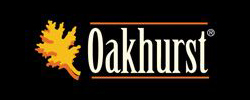SAFARI CLOTHING SPECIALS
Posted by Azulwear on 14th Apr 2021
Which outdoor and safari clothes are right for travelling or working in South Africa?
While some people prefer to wear everyday clothes, others only wear specialised gear as they believe it is an important part of the safari experience. Azulwear specialises in Insect Repellant Clothing : email us for further information.
Proudly manufactured in South Africa, our range of traditional bush shirts are made of 100% cotton, available in classic solid and two-tone colours, have reinforced stitching and multiple pockets. Designed as all-terrain wear, these shirts are second only to your sense of adventure. Dress the part in these iconic shirts. Contact our sales team to discuss corporate and personal branding options.
Which outdoor and safari clothes are right for travelling or working in South Africa?
While some people prefer to wear everyday clothes, others only wear specialised gear as they believe it is an important part of the safari experience.
Head to our Outdoor & Safari clothing page at https://www.azulwear.com/outdoor-safari-clothing/ for a wide range of safari and leisure wear.
Wearing neutral colours is not always necessary for driving safaris in South Africa. Wildlife see a vehicle as a big animal, so a visitor wearing a bright colour will not trigger an overt reaction. A walking safari is a different matter though. You are invading the territory of big game, and possibly predators. For the safety of your group, you will be expected to dress in neutral tones (bush colours), so white and bright colours are not appropriate.
When staying at game lodges and nature reserves you will notice that staff and rangers dress in the classic green, brown, beige and khaki safari gear for exactly this reason.
In Spring and Autumn in South Africa temperatures may vary dramatically. We have beautiful weather for days and then sudden cold and rainy weather for a day or two. Even if the days are warm, night time temperatures will be noticeably cooler. It’s not uncommon to start a game drive in the late afternoon feeling hot and end it a few hours later when the cold evening air has set in. Your ranger or guide will advise you to bring a torch, a hat and a warm jacket on the drive.
We recommend taking a warmer jacket for the evenings. Ponchos and fleece jackets are a good bet and easy to pack. A rainproof jacket, a hat or cap and comfortable water-resistant walking shoes are essential. To avoid sunburn and sunstroke, choose a wide brimmed hat and wear sunblock with 30 to 50 SPF (sun protection factor). Sunglasses are indispensable so carrying an extra pair when travelling is a good idea.
It is best to have a variety of clothes for both warm and cooler weather, for example wash-and-wear t-shirts, moisture wicking short-sleeved tops or shirts, comfortable pants or shorts (with extra pockets for cameras and water bottles) and swimwear. Depending on the type of safari, choose neutral tones in lightweight and breathable fabrics. The secret is to wear several layers that you can peel off or add to as needed.
Doing laundry can be a challenge in the bush for visitors and staff. In some luxury camps a laundry service or facilities may be provided. Washing is often done by hand so opting for drip-dry clothes will probably be best. Avoid clothes that need ironing. Some of the newer crease-proof fabrics are ideal for everyday wear in the bush.
Summer in South Africa is generally hot to very hot with temperatures rising well above 30°C during the day. In the summer rainfall areas, a cooling late afternoon shower sometimes comes to the rescue.
The Kruger Park and far northern KwaZulu Natal are Malaria areas. Consult your doctor about anti-Malaria medication before your trip. We recommend long pants, long-sleeved shirts and closed shoes in the evenings to guard against mosquitoes. The rest of South Africa is malaria-free but mosquitoes are pesky and can ruin a peaceful evening round the fire. It is wise to stock up on mosquito repellent.
In South African winter temperatures vary, with daytime temperatures reaching 25°C and falling to 5°C and below at night. Being on safari in June or July, you will need to come prepared with beanies, gloves and scarves.
Pack a small medical kit with pain killers, insect repellent and electrolyte powder. Lip balm, a good sunblock and after-sun lotion and a bottle of moisturiser will make your trip far more comfortable.







































